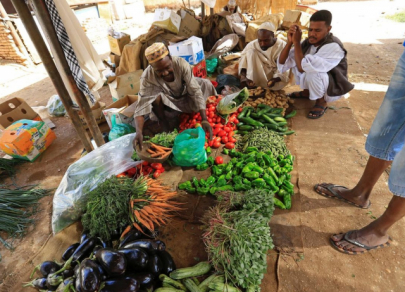FX.co ★ Deep in debt: 5 countries under extreme fiscal strain
Deep in debt: 5 countries under extreme fiscal strain
Sudan
Sudan ranks first globally in terms of sovereign debt burden, with its debt-to-GDP ratio soaring to 252% in 2025, surpassing even Japan. The main drivers include a prolonged armed conflict, institutional collapse, and a deep economic crisis worsened by hyperinflation and a plummeting national currency. Limited access to international financing and a fragile fiscal base have left the country teetering on the edge. The likelihood of default and a full-scale economic collapse remains extremely high under such conditions.

Japan
Japan remains one of the world's most advanced economies, despite a striking debt level of 234.9% of GDP. This burden stems from decades of ultra-loose monetary policy aimed at stimulating growth amid persistently low inflation and an aging population. Most of Japan’s debt is yen-denominated and held by domestic investors, which reduces the risk of a sudden crisis. Still, the country’s long-term fiscal sustainability is increasingly under scrutiny as economic momentum slows and social spending rises.

Singapore
Singapore holds the third-highest sovereign debt level in the world, 174.9% of GDP. However, unlike many other nations, such a high figure does not signal fiscal instability. Much of Singapore’s debt is technical in nature: it is issued to build domestic investment funds and is fully backed by assets. The country maintains steady economic growth, robust reserves, and a disciplined fiscal policy. As a result, despite the high debt level, risk remains minimal and the nation continues to enjoy a top-tier credit rating.

Greece
Greece, which endured a severe debt crisis in the 2010s, still ranks among the most indebted countries with a debt-to-GDP ratio of 142.2%. Despite years of austerity and structural reforms, the debt load remains high. Most of the country's obligations are concessional loans from international institutions, which help reduce short-term risk. Nonetheless, an aging population, sluggish growth, and heavy reliance on external financing continue to weigh on Greece’s long-term fiscal recovery.

Bahrain
With public debt standing at 141.4% of GDP, Bahrain is among the most vulnerable economies in the Gulf region. The country faces limited oil reserves compared to its neighbors and a high dependence on external borrowing. Post-pandemic fiscal deficits, rising social expenditures, and the need to maintain a fixed exchange rate have all intensified debt pressures. Despite financial support from nearby Gulf states, Bahrain’s long-term outlook remains uncertain. Its fiscal stability hinges on continued external assistance and volatility in oil markets.






















